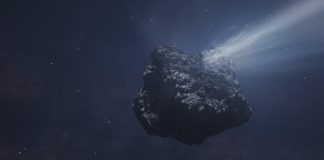Tonight, November 12th, celestial enthusiasts can look forward to observing the Third Quarter moon, a captivating sight in the night sky. This phase presents us with a luminous half-moon, where the left side gleams while the right side fades into darkness. Despite nearing its disappearance from full view, the moon’s surface still offers intriguing details for keen observers.
What to See: A Lunar Landscape Revealed
Even without optical aids, the naked eye can pick out prominent features on the illuminated portion of the Third Quarter moon.
The Mare Imbrium, a vast dark plain formed by an ancient impact, will be easily recognizable. Two distinctive craters, Kepler and Tycho, stand out against this backdrop.
Binoculars take lunar viewing to another level, unveiling the hidden gem of the Grimaldi Basin. This bowl-shaped depression sits low on the left side of the illuminated portion. Also visible will be the Mare Humorum, another dark plain, and the imposing Clavius Crater with its jagged rim.
Telescope users are treated to an even richer lunar tapestry, where they can discern finer details like the peculiar bright ray system known as Reiner Gamma. They’ll also find the landing site of Apollo 14, a testament to humanity’s journey into space, and the prominent linear fault called Rima Ariadaeus.
The Lunar Cycle: An Ever-Changing Dance
These distinct phases—from full illumination to complete darkness—are part of a captivating cycle known as the lunar phase. Driven by the moon’s orbit around Earth, this 29.5-day journey creates a mesmerizing visual ballet across our night sky.
As the moon travels, the angle at which sunlight reflects off its surface changes, revealing different proportions of illuminated areas to our perspective on Earth. The eight primary phases – New Moon, Waxing Crescent, First Quarter, Waxing Gibbous, Full Moon, Waning Gibbous, Third Quarter (or Last Quarter), and Waning Crescent – weave an intricate pattern of light and shadow that has captivated humans for millennia.
Next Lunar Appointment: A Full Illumination
If the celestial dance continues to fascinate you, mark your calendars! The next full moon will grace our skies on December 4th, offering a complete canvas of lunar brilliance.
























